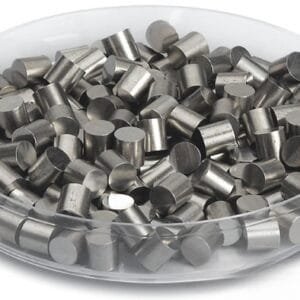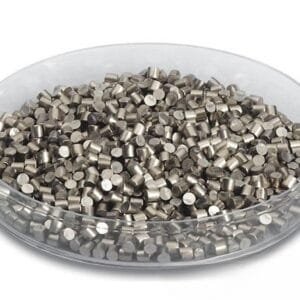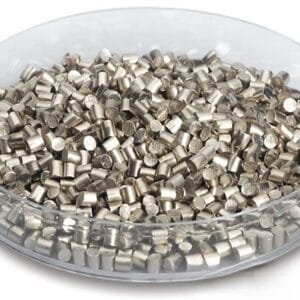TFM offers high-purity indium(III) oxide evaporation materials, a critical oxide with the chemical formula In₂O₃. These materials are integral to deposition processes, ensuring the production of top-quality films. With purity levels reaching up to 99.9995%, TFM’s indium(III) oxide evaporation materials are produced using stringent quality assurance measures to guarantee consistent reliability and performance.
Related Products: Indium Evaporation Materials
Indium(III) Oxide Evaporation Materials Specification
| Material Type | Indium(III) Oxide |
| Symbol | In2O3 |
| Color/Appearance | Yellowish odorless solid |
| Melting Point | 1,910 °C |
| Theoretical Density | 7.179 g/cm3 |
| Purity | 99.5% ~ 99.99% |
| Shape | Powder/ Granule/ Custom-made |
Applications of Indium(III) Oxide Evaporation Materials
Indium(III) oxide evaporation materials from TFM are widely used in various high-tech applications, including:
- Deposition Processes: Suitable for semiconductor deposition, chemical vapor deposition (CVD), and physical vapor deposition (PVD).
- Optical Applications: Ideal for wear-resistant coatings, decorative coatings, and display technologies.
Packaging and Handling
TFM ensures that all indium(III) oxide evaporation materials are carefully tagged and labeled for easy identification and rigorous quality control. Our packaging processes are meticulously designed to prevent any damage during storage or transportation, maintaining the integrity of the materials.
Contact TFM
TFM is a trusted manufacturer and supplier of high-purity indium(III) oxide evaporation materials, offering a range of shapes such as tablets, granules, rods, and wires. We also provide custom forms and quantities based on your specific needs. Additionally, TFM supplies a comprehensive selection of related products, including evaporation sources, boats, filaments, crucibles, heaters, and e-beam crucible liners. For pricing and inquiries regarding our evaporation materials or other products, please reach out to us.


 MSDS File
MSDS File



Reviews
There are no reviews yet.